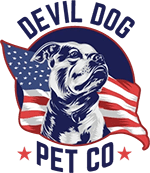Key Takeaways
- A dog burrow refers to underground tunnels and chambers dug by wild canids for shelter and safety.
- Wild canids like foxes, coyotes, and wolves create burrows to protect themselves from predators.
- These burrows help regulate temperature and provide secure spaces for raising their young.
- Canine burrows can be several feet deep and often have multiple entrances.
- The instinct to create burrows is a sophisticated survival behavior hardwired into canine DNA.
Table of Contents
- What Is a Dog Burrow?, Nature, Instinct, and Owner Responsibility
- The Science Behind Burrowing, Natural Canine Behavior and Survival Advantages
- Common Dog Burrowing Scenarios, From Blankets to Backyard Dens
- How to Create a Safe and Enriching Dog Burrow, Leadership in Action
- Dog Burrowing vs. Other Animal Burrows, Distinctive Features and Owner Guidelines
- Harnessing Burrowing Behavior for Training, Enrichment & Anxiety Relief
- Comparison Guide, Dog Burrow, Crate, and Modern Anxiety Solutions
- Best Products and Materials for Dog Burrow Comfort and Safety
What Is a Dog Burrow?, Nature, Instinct, and Owner Responsibility
A dog burrow encompasses two critical concepts every responsible owner must understand. In the wild, canids like foxes, coyotes, and wolves dig elaborate underground tunnels and chambers, true burrows that provide shelter from predators, temperature regulation, and safe spaces for raising young. These excavated sanctuaries can stretch several feet deep and feature multiple entrances, demonstrating the sophisticated survival instincts hardwired into canine DNA.
For domestic dogs, including our dog Dexter, burrowing manifests as the drive to seek, create, or tunnel into enclosed spaces. Your dog diving under blankets, scratching at couch cushions, or digging shallow depressions in your backyard isn't random behavior, it's ancestral programming in action. The key distinction lies in understanding that while wild canids create actual underground burrows, house dogs adapt this instinct to available resources: blankets become cave walls, crates transform into dens, and furniture gaps substitute for natural hollows.
The difference between burrowing and denning matters for leadership decisions. Burrowing involves active excavation or tunneling behavior, your dog physically creating or modifying a space. Denning describes the act of resting or nesting in an already-enclosed area. Both serve identical purposes: security, temperature control, and stress relief. Recognizing whether your dog is actively burrowing or simply denning helps you respond appropriately rather than react blindly.
When supporting your dog's natural burrowing instincts, providing appropriate outlets is essential. For example, offering Large Himalayan Dog Chews can help satisfy their need to chew and decompress, while a Large Whole Elk Antler Official Dog Chew offers a long-lasting, natural option that supports both dental health and instinctual behavior.
Why Extreme Dog Leadership Starts with Understanding the Burrow Instinct
Here's the leadership reality check: your dog's burrowing signals either healthy self-regulation or an unmet need demanding your attention. Extreme Dog Leadership means taking full responsibility for reading these signals correctly and responding with purpose, not panic.
When Dexter burrows under his favorite fleece after a long training session, he's demonstrating healthy decompression. When a client's anxious rescue frantically digs at carpets and refuses to emerge from under furniture, that's a red flag requiring structured intervention. The difference isn't the behavior, it's the context, intensity, and your response as the leader.
Dogs burrow due to biological triggers (temperature, fatigue), social factors (anxiety, overstimulation), and environmental pressures (noise, unfamiliar settings). Your job isn't to eliminate the instinct, it's to channel it productively. Provide appropriate outlets, recognize when burrowing indicates problems, and never let confusion or neglect turn natural behavior into destructive habits. Leadership starts with observation, continues with understanding, and succeeds through consistent, informed action.
The Science Behind Burrowing, Natural Canine Behavior and Survival Advantages

Instinctual Roots
Wild canids architect survival through strategic excavation. Red foxes construct burrows extending 6-8 feet underground with tunnels spanning 25-30 feet, featuring multiple chambers for sleeping, food storage, and nursery areas. Coyotes dig simpler but equally effective dens, typically 5-30 feet long with enlarged chambers at the end. These aren't casual scratches in the dirt; they're engineered microenvironments that provide predator evasion, climate control, and secure spaces for vulnerable young.
Selective breeding intensified burrowing instincts in specific lines. Terriers were developed to pursue vermin into underground tunnels, their compact frames, determined temperaments, and powerful digging capabilities made them lethal underground hunters. Dachshunds earned the nickname "badger dogs" by following prey into setts and burrows where larger hounds couldn't follow. These breeds don't just remember their burrowing heritage; they're genetically programmed to seek, create, and thrive in enclosed spaces.
Modern domestic dogs, regardless of breed, retain these adaptive micro-den behaviors. Our dog Dexter demonstrates classic denning when he arranges his blankets into a nest-like formation before settling down. Your Lab mix diving under throw pillows or your Golden Retriever claiming the space beneath your desk isn't coincidence, it's ancestral wisdom expressing itself through contemporary comfort-seeking.
To learn more about why dogs exhibit these behaviors, check out why does my dog do that for deeper insight into canine instincts and communication.
The Comfort Equation
Temperature regulation drives much burrowing behavior, and the science backs up what wild canids discovered millennia ago. Underground burrows maintain temperatures 8-15°F warmer than surface conditions during winter months, while providing cooling relief during summer heat. This natural climate control system allows dogs to self-regulate without expending energy on thermoregulation, energy better spent on hunting, reproduction, and survival.
The psychological benefits match the physical advantages. Enclosed environments trigger measurable stress reduction in canines, cortisol levels drop, heart rates slow, and muscle tension decreases when dogs settle into den-like spaces. Research parallels these findings to human responses to swaddling or weighted blankets: compression and enclosure activate the parasympathetic nervous system, promoting calm and recovery.
Universal Triggers
Burrowing behavior transcends breed boundaries. Toy breeds seek micro-dens as readily as working dogs claim larger territories. Great Danes wedge themselves into impossibly small spaces with the same determination Chihuahuas show tunneling through blanket piles. Size doesn't predict burrowing intensity, temperament, environment, and individual comfort preferences do.
Recognize the signs your dog is a natural burrower: systematic bedding rearrangement before lying down, scratching or pawing at soft surfaces, gravitating toward enclosed spaces during rest periods, or creating "nests" from available materials. These behaviors aren't problems requiring correction, they're communication requiring understanding. Observe without judgment, then provide appropriate outlets that satisfy the instinct safely.
Common Dog Burrowing Scenarios, From Blankets to Backyard Dens
Blanket Burrowing
The most common domestic expression of burrowing instinct happens on your couch, bed, or wherever soft materials gather. Dogs tunnel under blankets to recreate the enclosed security of natural dens while accessing the warmth and scent comfort of pack proximity, in this case, your family. This behavior peaks during cold weather, stressful periods, or when dogs seek quiet recovery time after stimulation.
Leadership Action: Provide designated blanket burrowing opportunities with dog-safe materials. Choose lightweight fleece or cotton throws that allow airflow, never heavy comforters or heated blankets that risk overheating or restricted breathing. Wash bedding weekly to prevent bacteria buildup, and supervise puppies or brachycephalic breeds whose breathing might be compromised in enclosed spaces.
Furniture Tunneling
Dogs claiming spaces under beds, behind couches, or in closet corners aren't hiding, they're den-seeking. This behavior intensifies when household activity levels spike, unfamiliar visitors arrive, or environmental stressors (construction noise, storms) trigger the need for secure retreat spaces. The cooler temperatures and reduced light under furniture mimic natural burrow conditions.
Leadership Action: Secure electrical cords, remove choking hazards, and ensure adequate ventilation in claimed spaces. Reinforce "Place" command training so your dog learns to settle in designated areas on cue rather than disappearing unpredictably. Create structured den alternatives, covered crates or designated quiet zones, that satisfy the instinct while maintaining household management.
Backyard Excavation
Outdoor digging represents the most direct expression of wild burrowing instinct. Dogs excavate for temperature regulation (cool earth in summer, wind protection in winter), boredom relief, prey drive activation when they detect underground scents, or simple instinctual satisfaction. Fence-line digging often indicates escape motivation or territorial boundary testing.
Leadership Action: Channel digging energy productively by designating a specific "dig zone" in your yard. Fill a 3x3 foot area with loose sand or soil, bury high-value treats or chew toys, and praise enthusiastic digging in this approved location. Block destructive digging by burying chicken wire 6 inches underground along fence lines or filling unwanted holes with concrete pavers.
Crate and Artificial Den Creation
Properly introduced crates satisfy burrowing instincts through structured enclosure that dogs can control and predict. This makes crate training particularly effective for rescue dogs, anxiety-prone animals, or households managing multiple pets. The key lies in association, crates become positive den spaces when paired with comfort items, appropriate chews, and voluntary entry rather than forced confinement.
Leadership Action: Line crates with washable, chew-resistant bedding that allows burrowing behavior without destruction risk. Limit closed crate time to 8 hours maximum for adult dogs, 3 hours for puppies, ensuring adequate exercise and mental stimulation outside confinement periods. Pair crate time with long-lasting chews like 12" Braided Bully Stick or Medium Split Elk Antler Dog Chews to create positive associations and prevent anxiety or destructive behavior.
How to Create a Safe and Enriching Dog Burrow, Leadership in Action
DIY Indoor Burrow Setup
Size your indoor burrow space correctly from the start. Your dog needs at least 1.5 times their body length to stretch fully, plus enough height to stand without hunching. A 60-pound dog requires roughly 4 feet of length and 30 inches of height, cramped quarters create stress, not comfort. Measure twice, build once.
Choose materials that balance comfort with durability. Fleece blankets provide warmth without weight, while memory foam pads offer joint support for older dogs. Skip anything with loose threads, removable stuffing, or synthetic materials that can't handle regular washing. Rotate bedding weekly to prevent bacteria buildup and maintain freshness. Create layers your dog can arrange, most natural burrowers will reorganize bedding to their preferences within minutes.
Establish the "Place" command as your foundation for burrow training. Start with 5-minute sessions, rewarding calm settling with high-value chews like Beast - Himalayan Dog Chew or appropriately sized antlers. Build positive associations by pairing burrow time with post-exercise relaxation or quiet household periods. Never force entry, let your dog choose the space voluntarily while you reinforce the behavior with structured rewards.
Outdoor Burrow Alternatives
Construct raised dog houses that simulate natural burrow benefits without underground risks. Elevate the floor at least 2 inches off the ground for moisture protection and insulation. Install wind breaks on the prevailing weather side while maintaining cross-ventilation to prevent overheating. Size the entrance large enough for easy access but small enough to retain warmth, roughly 1.25 times your dog's shoulder width works for most breeds.
Designate a specific dig zone to satisfy excavation instincts safely. Create a 3x3 foot area filled with loose sand or soil, bordered by landscape timbers or stone to define boundaries. Bury safe chews, puzzle toys, or treats 6-8 inches deep, then praise enthusiastic digging in this approved location. Rotate buried treasures weekly to maintain interest and prevent the area from becoming stale or ignored.
Safety Protocols
Never compromise on safety for comfort. Eliminate electric heating pads, weighted blankets, or anything that could restrict breathing or movement. Inspect burrow areas weekly for mold, pest intrusion, or structural damage. Check that all materials remain chew-resistant and free from loose threads or sharp edges that could cause injury or intestinal blockage.
For destructive diggers, supervision becomes non-negotiable. Redirect unwanted digging immediately using the "Leave it" command, then guide your dog to their designated dig zone. Fill problem holes with concrete pavers or bury chicken wire 6 inches underground along fence lines to prevent escape attempts. Address the root cause, often boredom or excess energy, through increased exercise and mental stimulation rather than just blocking the behavior.
Leadership Routine Examples
Structure "burrow time" as part of your daily leadership routine. Schedule 15-30 minutes of calm den time after exercise sessions, before high-stimulation activities, or during household chaos like dinner preparation. This teaches your dog to self-regulate and decompress on cue rather than seeking inappropriate hiding spots when overwhelmed.
Pair burrow time with long-lasting chews to create positive associations and prevent anxiety. A 12" Ultra Thick Bully Stick or appropriately sized elk antler transforms den time into enrichment, satisfying both comfort-seeking and chewing instincts simultaneously. Monitor consumption and remove small pieces that could become choking hazards, but allow your dog to work the chew methodically while settled in their designated space.
Dog Burrowing vs. Other Animal Burrows, Distinctive Features and Owner Guidelines

Design and Purpose Differences
Dog burrows differ fundamentally from other animal excavations in both structure and intent. Domestic dogs create shallow, single-chamber depressions primarily for comfort and temperature regulation. These typically measure 12-18 inches deep with simple, round openings just large enough for entry and turning. The purpose remains immediate: cooling in summer heat, wind protection in winter, or stress relief during overwhelming situations.
Contrast this with rabbit warrens, complex underground cities featuring multiple entrances, nursery chambers, and escape tunnels extending 6-10 feet deep. Badgers engineer dual-chamber dens with separate sleeping and latrine areas, while foxes construct elaborate tunnel systems with bolt-holes for predator evasion. These represent permanent housing solutions for wild survival, not temporary comfort-seeking like domestic dog burrows.
Rodent burrows add another layer of complexity with food storage chambers, multiple family units, and seasonal modifications. Ground squirrels create different tunnel depths for summer cooling versus winter hibernation, while prairie dogs build ventilation shafts and nursery alcoves. Understanding these distinctions helps owners recognize when yard excavation represents normal dog behavior versus potential wildlife intrusion requiring different management strategies.
Owner Safety Implications
Domestic dog burrows present minimal safety risks when properly managed. Primary concerns include escape potential if dug near fence lines, minor yard damage, and hygiene maintenance in frequently used spots. Address these through strategic placement guidance, designated dig zones, and regular inspection routines that prevent problems before they escalate.
Wildlife burrows demand strict avoidance protocols. Never allow your dog to investigate or enter burrows created by other animals, risks include parasites, structural collapse, territorial confrontations, and exposure to rabies or other diseases. Groundhog burrows can extend 25 feet underground with multiple chambers, creating serious collapse hazards for curious dogs. Skunk dens pose obvious spray risks, while fox burrows may harbor fleas, ticks, and mites that transfer to domestic animals.
Implement a zero-tolerance policy for wildlife burrow exploration. Train a rock-solid "Leave it" command and maintain leash control in areas with known wildlife activity. Fill discovered animal burrows on your property only after confirming they're abandoned, active dens require professional wildlife removal services to avoid legal violations and safety risks.
Practical Identification Guide
Identify dog-created burrows through specific visual cues that distinguish them from wildlife excavations. Dog burrows feature fresh paw prints around the entrance, scattered soil in paw-sized clumps, and single openings without complex tunnel systems. The depth rarely exceeds 18 inches, and the shape remains roughly circular to accommodate turning and settling behaviors.
Wildlife burrows display different signatures: rabbit holes appear perfectly round with packed earth around edges, often featuring small droppings nearby. Groundhog burrows show large entrance holes (6-8 inches diameter) with substantial soil mounds and multiple escape tunnels. Fox dens emit distinctive musky odors and may contain prey remains or scat around the entrance area.
Conduct weekly yard patrols in multi-pet households or after introducing rescue dogs with unknown digging histories. Document new excavations with photos and measurements to track patterns and identify repeat locations requiring intervention. This systematic approach prevents minor digging from escalating into major landscape damage or safety hazards requiring expensive repairs.
Harnessing Burrowing Behavior for Training, Enrichment & Anxiety Relief
Denning for Mental Wellness
Transform your dog's natural burrowing instinct into structured mental wellness through systematic "Place" training. Practice 3-5 sessions daily, each lasting 5-10 minutes, using your dog's designated burrow area as the target location. Reward calm settling with premium chews, yak cheese for moderate chewers, appropriately sized elk antlers for power chewers, or bully sticks for quick flavor satisfaction. This builds positive associations between den time and high-value rewards.
Schedule denning sessions strategically around your dog's natural energy cycles. Post-exercise relaxation periods offer ideal timing when your dog's body naturally seeks recovery space. The enclosed environment triggers endorphin release while the chewing activity provides additional stress relief and mental engagement. Monitor session length to prevent resource guarding around the den area, rotate chews and maintain your leadership presence without hovering.
Use burrow time as a reset tool during household chaos or overstimulation. When visitors arrive, construction noise peaks, or multiple activities overwhelm your dog, guide them to their designated den space with a calm "Place" command. This teaches self-regulation skills and prevents anxiety-driven destructive behaviors that often emerge when dogs can't find appropriate coping outlets.
Dig Zone Enrichment Protocol
Engineer your designated dig zone for maximum enrichment value through strategic design and rotation protocols. Create a 3x4 foot area using loose sand or soil, bordered by landscape timber to define boundaries clearly. Bury Devil Dog chews at varying depths, shallow placement for quick wins, deeper burial for extended searching and digging satisfaction. Rotate burial locations weekly to prevent predictable patterns that reduce mental stimulation.
Implement a treasure hunt system that rewards successful excavation. Hide different chew types on different days: Monday features yak chews for lasting engagement, Wednesday offers split antlers for immediate flavor reward, Friday delivers bully sticks for high-protein satisfaction. This creates anticipation and maintains interest while satisfying the natural foraging instincts that drive much digging behavior.
Praise enthusiastic digging in the approved zone while immediately redirecting any excavation attempts elsewhere in the yard. Use the "Good dig!" verbal marker when your dog works the designated area, then guide them away from forbidden zones with "Leave it" followed by "Go dig" while pointing toward the approved space. Consistency prevents confusion and establishes clear boundaries around acceptable digging locations.
Problem-Solving Anxiety-Driven Burrowing
Recognize the difference between comfort burrowing and anxiety-driven compulsive digging. Healthy burrowing appears calm and purposeful, dogs arrange bedding deliberately, settle comfortably, and emerge readily when called. Anxiety burrowing involves frantic scratching, vocalizations during digging, excessive time spent hidden, and resistance to leaving covered spaces even for meals or bathroom breaks.
Address anxiety burrowing through systematic desensitization combined with increased enrichment. Identify triggers, thunderstorms, separation anxiety, household changes, then gradually expose your dog to low-level versions while rewarding calm responses. Increase daily exercise to 90 minutes minimum for moderate-energy dogs, incorporating mental challenges like nose work or puzzle feeding that tire the brain alongside the body.
Implement structured crate training as an anxiety management tool when burrowing becomes compulsive. Start with 10-minute sessions using high-value chews, gradually extending duration as your dog develops positive associations. Cover the crate with blankets to create den-like enclosure while maintaining airflow and visibility. This provides controlled burrowing satisfaction while preventing destructive excavation behaviors that damage property or indicate escalating stress levels requiring veterinary intervention.
Training Boundaries Without Suppressing Instincts
Redirect destructive digging without punishing the natural instinct through positive channeling techniques. When you catch your dog digging inappropriately, interrupt with "Leave it," then immediately guide them to the approved dig zone while saying "Go dig here." Reward successful redirection with praise and allow several minutes of enthusiastic digging in the correct location.
Fill unwanted holes immediately to prevent re-digging while making them less appealing for future attempts. Mix citrus peels or white vinegar into the soil replacement, most dogs avoid these scents. For persistent fence-line diggers, bury chicken wire 6 inches deep along problem areas, covering with 2 inches of soil. The uncomfortable texture discourages digging without causing injury.
Increase structured exercise and mental stimulation to address the root energy that drives excessive digging. A tired dog with satisfied mental needs rarely develops destructive excavation habits. Implement daily training sessions, interactive puzzle toys, and varied walking routes that provide the environmental enrichment and physical challenge that prevent boredom-driven destructive behaviors.
For more on the benefits and safety of antler chews, see are antlers for dogs a good idea for an in-depth look at this popular enrichment option.
Comparison Guide, Dog Burrow, Crate, and Modern Anxiety Solutions
Dog Burrow vs. Crate vs. Anxiety Bed, The Data
| Feature | Natural Dog Burrow | Crate Training | Anxiety Bed/Wrap |
|---|---|---|---|
| Enclosure Level | Full to partial | Complete control | Partial compression |
| Instinct Appeal | Maximum, mirrors wild behavior | High when properly introduced | Moderate, artificial comfort |
| Safety Control | Moderate, requires supervision | High, lockable, predictable | Moderate, depends on materials |
| Anxiety Relief | High, natural endorphin release | High if positive associations built | Variable, dog-dependent |
| Portability | Low, location-specific | High, travel-friendly | High, lightweight options |
| Cost Factor | Low, DIY materials | Medium, quality crates last years | Medium to high, replacement frequency |
Selection Criteria Based on Dog Profile
Puppies and Seniors: Choose burrow beds with easy exit access over deep excavation opportunities. Crates work best for house training and travel, while anxiety wraps provide gentle compression without confinement stress. Avoid materials that could trap breathing or restrict movement in emergency situations.
High-Anxiety Dogs: Layer solutions for maximum effectiveness. Start with a designated burrow area using lightweight fleece, add structured crate training with positive chew associations, then incorporate anxiety wraps during specific triggers like storms or separation. The combination often outperforms any single approach.
Multi-Dog Households: Provide individual den spaces to prevent resource guarding and territorial conflicts. Stagger access to premium burrow locations, ensure each dog has a designated retreat space, and monitor interactions around high-value den areas. Size spaces appropriately, cramped quarters create stress, not comfort.
Rotational Leadership Strategy
Implement systematic rotation to prevent habituation and maintain enrichment value. Week one focuses on natural burrow behavior with designated dig zones and blanket tunneling. Week two emphasizes crate training with extended chew sessions using yak cheese or appropriately sized antlers. Week three introduces anxiety management tools like compression wraps or weighted beds.
Track your dog's response to each approach through simple behavioral observations. Note energy levels before and after den time, willingness to enter different spaces voluntarily, and overall stress indicators like panting, pacing, or destructive behaviors. Adjust the rotation based on what produces the calmest, most satisfied responses rather than following rigid schedules that ignore individual preferences.
For additional reading on canine anxiety and management strategies, see 15 dog breeds prone to separation anxiety for insights on breed tendencies and solutions.
Best Products and Materials for Dog Burrow Comfort and Safety

Premium Burrow-Style Beds and Caves
Invest in high-walled den beds with removable, washable covers that withstand weekly cleaning cycles. Look for memory foam bases that support joint health during extended rest periods, especially for senior dogs or breeds prone to hip dysplasia. Avoid beds with loose stuffing or decorative elements that become choking hazards when dogs rearrange bedding to their preferences.
Covered crates transform standard wire kennels into den-like environments while maintaining airflow and visibility. Choose breathable fabrics like cotton canvas over synthetic materials that trap moisture and odors. Ensure covers remain accessible for quick removal during emergencies or overheating situations.
Outdoor Shelter Solutions
Construct or purchase dog houses that simulate natural burrow advantages without underground risks. Elevate floors at least 3 inches off ground level using pressure-treated lumber to prevent moisture damage and improve insulation. Install removable roof panels for easy cleaning and seasonal ventilation adjustments.
Size outdoor shelters correctly from the start, interior dimensions should allow your dog to stand, turn around, and lie down comfortably without excess space that reduces warmth retention. Add wind breaks on prevailing weather sides while maintaining cross-ventilation to prevent dangerous overheating during summer months.
DIY Materials That Work
Indoor Setup: Fleece blankets provide warmth without weight, while waterproof backing protects flooring from accidents or slobber. Memory foam pads offer joint support for older dogs, and rubber-backed mats prevent sliding during entry and exit. Rotate materials weekly to maintain hygiene and prevent bacterial buildup in frequently used areas.
Outdoor Construction: Fill designated dig zones with clean sand or loose soil, bordered by landscape timber or stone to define boundaries clearly. Avoid treated materials that could leach chemicals into soil your dog will contact directly. Install drainage systems in areas with heavy rainfall to prevent standing water that breeds bacteria and parasites.
Enrichment Integration
Pair burrow time with Devil Dog Pet Co.'s premium chews to create positive associations and prevent anxiety-driven behaviors. Monster yak chews provide extended engagement for power chewers, while split antlers offer immediate flavor rewards for dogs new to den training. Bully sticks work perfectly for shorter burrow sessions when you need reliable timing and digestible satisfaction.
Rotate chew types to maintain interest and provide varied nutritional benefits. Monday features yak cheese for lasting mental stimulation, Wednesday offers elk antlers for dental health, Friday delivers bully sticks for high-protein rewards. This systematic approach prevents habituation while reinforcing the burrow as a positive, rewarding space your dog seeks voluntarily.
Download the FREE 10-Step Dog Prep Guide →
Frequently Asked Questions
What is a dog burrow?
A dog burrow is an underground tunnel or chamber dug by wild canids like foxes, coyotes, and wolves for shelter, safety, and raising their young. In domestic dogs, burrowing also refers to the instinctive behavior of seeking or creating enclosed, den-like spaces for comfort and security.
Why do dogs burrow before they lay down?
Dogs burrow before lying down as a natural instinct inherited from their wild ancestors who dug to create safe, comfortable resting spots. This behavior helps regulate temperature, provides a sense of security, and prepares a cozy space to rest.
What happens when animals burrow?
When animals burrow, they excavate tunnels and chambers that offer protection from predators, shelter from harsh weather, and safe places to raise their young. Burrowing also helps regulate temperature and creates secure environments essential for survival.






